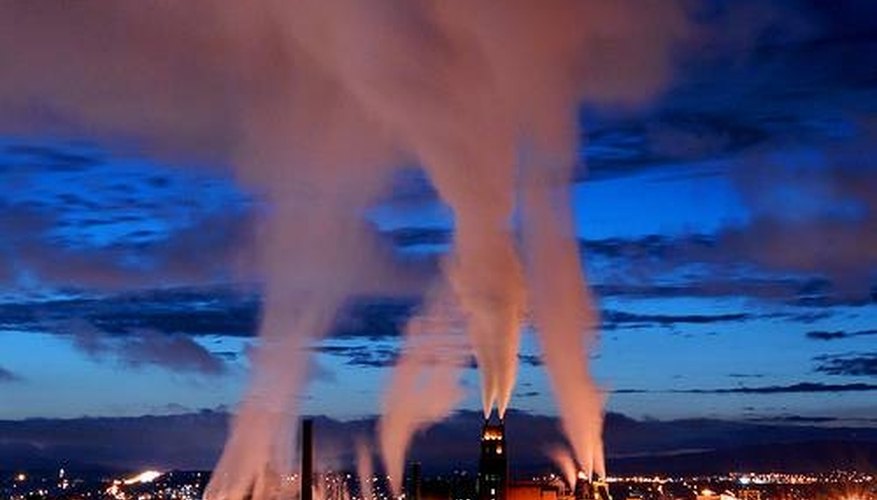Asthma is a lung disease characterised by swollen and/or narrow airways that cause a person to have trouble breathing. People with asthma often have environmental triggers that exacerbate typical asthma symptoms such as coughing and wheezing. Since many of the common triggers--for example, dust, pollen and second-hand smoke--occur in the atmosphere, people with asthma should avoid locations with high concentrations of asthma triggers. Knowledge of your own personal triggers will help you seek out homes with fewer overall airborne irritants.
Pick the Right City
The Asthma and Allergy Foundation of America recommends that people with asthma seek to minimise irritants in their own homes rather than look for cities with lower asthma rates. Since all modern American cities will have some level of air pollution particles, mould, dander and other common asthma triggers, it is not always feasible or useful to move from your city to a more asthma-friendly city. However, if you have flexibility in your life and/or are particularly vulnerable to area-specific irritants of your city, you may benefit from finding a city that suits you better.
- The Asthma and Allergy Foundation of America recommends that people with asthma seek to minimise irritants in their own homes rather than look for cities with lower asthma rates.
- Since all modern American cities will have some level of air pollution particles, mould, dander and other common asthma triggers, it is not always feasible or useful to move from your city to a more asthma-friendly city.
To find the best city for you, look at the factors that adversely affect your asthma and then find cities without high concentrations of those triggers. Look at Air Now's air-quality guide to learn of the current particle levels in your city's air. If your city has high amounts of a particle that triggers your asthma, consider moving to a new city if your personal and professional situations allow it. However, since most people can not simply leave their cities at the drop of a hat, your best bet is to find the areas of the city that contain the least amount of airborne irritants.
Picking the Right Area of the City to Live
The closer you live to freeways, factories, bridges, train yards or other areas in which pollution wreaks the most havoc, the more susceptible you may be to asthma flare-ups. Look for the least-crowded areas of the city. Yet since some people's asthma gets worse with pollen and other non-industrial environmental factors, a move away from the bustling city centre may not help your asthma. Your best bet is to have a sense of what triggers your asthma and then look for areas of the city that have a relatively lower amount of those triggers in the air. Take a look at your city's official website for data on air pollution and other irritants and compare the data against your own asthma trigger chart.
- The closer you live to freeways, factories, bridges, train yards or other areas in which pollution wreaks the most havoc, the more susceptible you may be to asthma flare-ups.
- Yet since some people's asthma gets worse with pollen and other non-industrial environmental factors, a move away from the bustling city centre may not help your asthma.
Avoid Humid, Rainy and/or Cold Weather
Some of the environmental factors known to exacerbate asthma according to the National Environmental Public Health Tracking Network include humid air, tempestuous weather and cold climates. Look for cities or areas of your current region that are lower in humidity, precipitation and average temperature. Again, not everyone has the luxury to move to a non-humid, sunny city. However, since many cities contain a few different ecosystems, you may find a more asthma-friendly section of your current city without having to uproot your life.
- Some of the environmental factors known to exacerbate asthma according to the National Environmental Public Health Tracking Network include humid air, tempestuous weather and cold climates.
- However, since many cities contain a few different ecosystems, you may find a more asthma-friendly section of your current city without having to uproot your life.
Elevation
Another factor that plays a role in asthma is elevation. Higher elevations tend to have lower asthma incidence, according to a 2004 National Review of Medicine study. If you live in a city with a variance in elevation, consider settling in a more mountainous or hilly part of your city. Remember to keep track of your trigger factors though. Do not move to a house with a higher elevation if it means you will now have increased exposure to factory pollution or any other asthma triggers.
- Another factor that plays a role in asthma is elevation.
- Do not move to a house with a higher elevation if it means you will now have increased exposure to factory pollution or any other asthma triggers.
